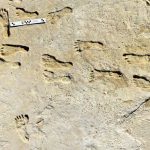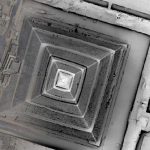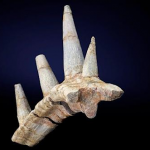Do we live in a computer simulation? If we don’t, we might be doomed0
- Earth Mysteries, From Around the Web
- October 25, 2021
Not living in a simulation might be humanity’s worst option.

Not living in a simulation might be humanity’s worst option.

It’s true: Crabs keep turning up in nature, and it’s bothering scientists so much that they’ve been given federal grants to get to the bottom of it.

People across Suffolk reported seeing a strange glowing triangle in the sky last night, with many jumping to the conclusion that it was a UFO.

In a study of exposed outcrops of Lake Otero in New Mexico, the United States, archaeologists have discovered numerous human footprints dating to about 23,000 to 21,000 years ago. The discovery confirms the presence of humans in North America during the Last Glacial Maximum, adding evidence to the antiquity of human colonization of the Americas.

It’s neither a bird nor a plane, but a winged microchip as small as a grain of sand that can be carried by the wind as it monitors such things as pollution levels or the spread of airborne diseases.

The newest military branch, the U.S. Space Force, has released prototypes of uniforms for its Guardians.

Astronomers analyzing 3D maps of the shapes and sizes of nearby molecular clouds have discovered a gigantic cavity in space.

Modern roads and developments share more similarities with ancient urban centers than we often realize – which is certainly the case with the sprawling Teotihuacan settlement, once located around 40 kilometers (25 miles) northeast of Mexico City.

Even though the asteroid Apophis won’t hit Earth for at least another century, its scientific impact will be tremendous.

The ankylosaur species of dinosaur is best known for its armored spikes but, before now, remnants have only been discovered in North America. Fossil hunters found a unique type of ankylosaur that derives from the Middle Atlas mountains in Morocco – giving Africa its first ankylosaur.